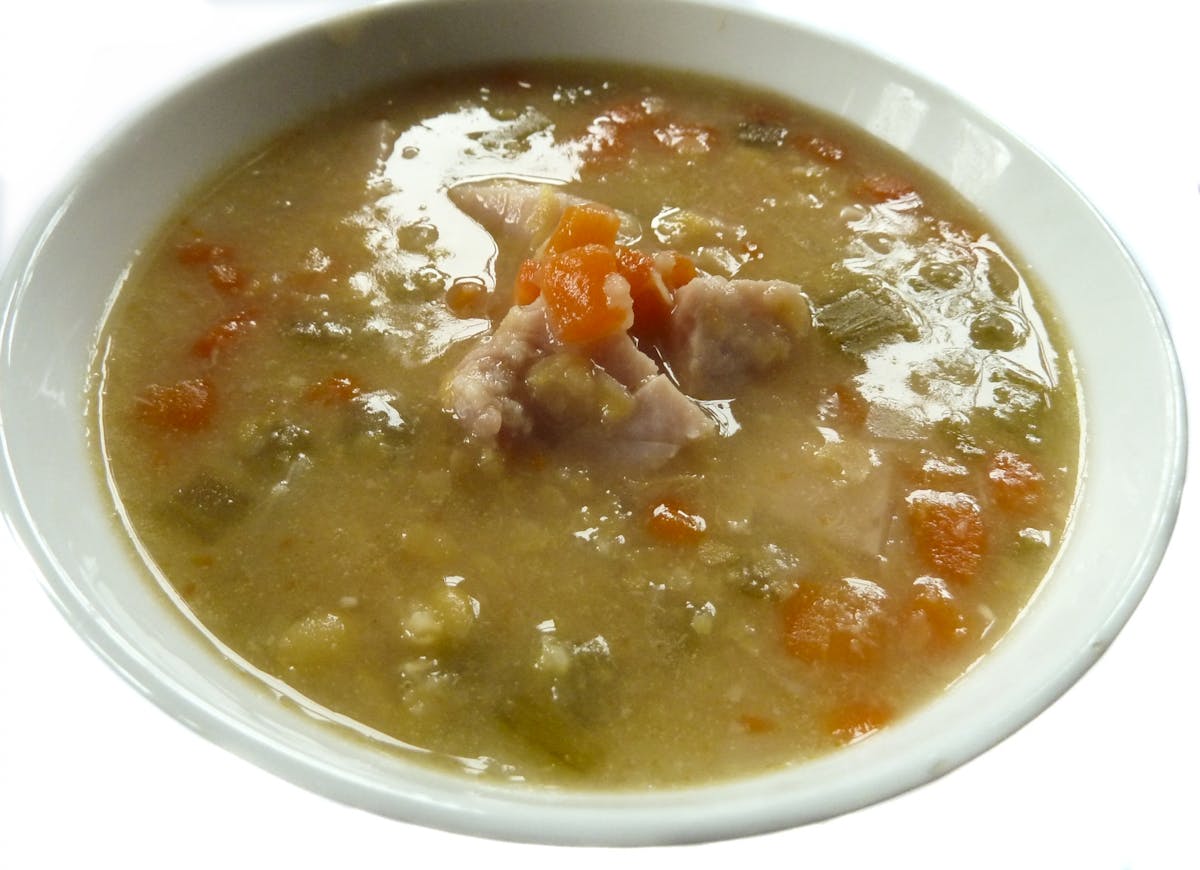I call it free food. My children used to laugh at me as I would dish it up with glee and remind them that the evening's meal was free. Now they are young adults who know how to pinch a penny. When they make it for themselves, they remember: This almost-no-cost meal is a winner.
That's what I call the process of making soup from scraps. Leftover chicken or turkey carcass? In the soup pot. Ham bone? In the soup pot. Nothing goes to waste when a stockpot is on the back burner.
I start by making the base for the soup with leftover bones, having removed any meat scraps that I want to use in the final soup, since simmering the meat too long will make it tough. I add coarsely cut vegetables to the water (carrots, onions and celery -- celery leaves are particularly flavorful), along with peppercorns and a couple of bay leaves, all of which will be discarded once the stock has simmered. Save the carcasses from the $5 roasted chickens from the supermarket and really get your money's worth by using them as the base for soup.
I simmer the stock for an hour and a half, less if I'm short of time, more if I happen to forget about it. When my children were of school age, I often had stock simmering on the stove during winter evenings while they did their homework at the kitchen table, me doing my mealtime prep for the next evening while they studied.
Once the stock is done, it's strained and cooled in the refrigerator. I prefer to finish the soup the next day when, after the liquid chills, any fat rises to the surface to be easily discarded. But the soup could be completed immediately after it's strained, if that works better for the cook.
The next step -- which for me is the next day -- is to sauté a new batch of celery, carrots and onions before adding it to the stock. These will be part of the finished soup, so they should be cut all the same size.
Then I let whimsy take over. If it's chicken stock, I decide on the starch, if any, to add with any cut-up chicken: noodles (homemade or packaged), dumplings or spaetzle, rice or wild rice. Or perhaps I'll use the stock for an entirely different soup, such as cream of celery (see recipe).
If it's ham stock, I choose between split peas or beans (Great Northern or pintos) with added ham. Maybe I'll add a potato to any of these choices, or maybe not. What ends up in the pot depends on what's in my pantry or refrigerator, hence the sense of "free" food. Even if I buy fresh vegetables or a bag of split peas or noodles, the cost is minimal, a filling meal for what amounts to pocket change.
Thirty minutes later, my "free" meal is on the table: hot and fragrant, a simple dinner in a bowl.
Animal groups are urging tourists not to visit Wyoming after a man hit a wolf then took it to a bar
Mexican film wins top prize at Moscow International Film Festival while major studios boycott Russia
Berkshire Hathaway's real estate firm to pay $250 million to settle real estate commission lawsuits

